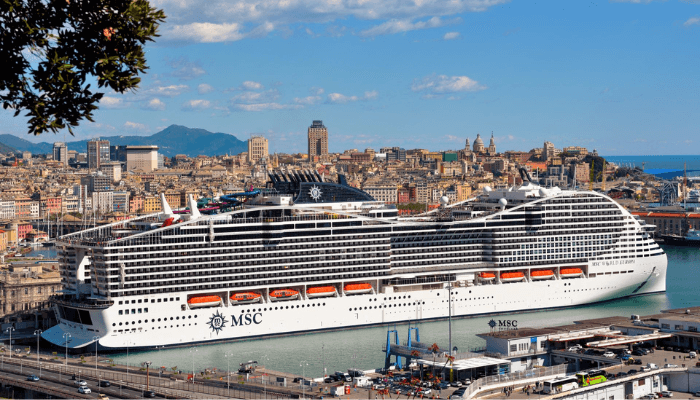Europe’s Luxury Cruise Ships Emit As Much Toxic Sulphur As 1bn Cars – Study
Cruise ship pollution around ports higher than pre-pandemic levels, but air pollutants from cruise ships fell 80% in Venice following the city’s ban on large ships.
Toxic air pollutants from cruise ships around ports are higher than pre-pandemic levels, leaving Europe’s port cities choking in air pollution, a new Transport & Environment study shows. Despite the introduction of the UN shipping body’s sulfur cap in 2020, last year Europe’s 218 cruise ships emitted as many sulfur oxides (SOx) as 1 billion cars. However, at the port of Venice air pollutants from cruise ships fell 80% following the city’s ban on large cruise ships. It shows that it is possible to tackle air pollution, says T&E, which calls for greater electrification at ports in order to save lives.
Constance Dijkstra, the shipping campaigner at T&E, said: “The pandemic provided some respite for port cities, but this is now well and truly over. Cruising is back and tourist hotspots like Barcelona and Athens are again choking on toxic air pollution from cruise ships. Venice has shown that tackling cruise ship pollution is possible, but bans aren’t the only way. Ports can significantly reduce pollution levels by forcing ships to plug into electricity at the port instead of running their engines, and by supporting the adoption of zero-emission fuels.”

Compared to 2019, the number of cruise ships, the time they spent around ports, and the fuel they consumed all increased by around a quarter (23%-24%). This resulted in an increase of 9% in SOx emissions, 18% in NOx emissions, and 25% in PM2.5 emissions – three toxic air pollutants.
Barcelona was Europe’s most polluted port last year followed by Civitavecchia, a coastal port northwest of Rome, and the Athenian port of Piraeus. In Barcelona, cruise ships emitted almost three times more SOx than all the cars in the city. SOx limits for vehicles in Europe are 100 times more stringent than those for ships.
Venice, on the other hand, improved significantly. The most cruise-polluted port in 2019 dropped to 41st last year following a ban on large cruise ships entering the port that was introduced in 2021, leading to an 80% fall in SOx emissions.
That did not stop Italy from surpassing Spain as the most cruise ship-polluted country in Europe. Although the Mediterranean bears the brunt of cruise ship pollution, Norway came fourth in the ranking and even had the highest cruise traffic of any country, albeit with smaller ships.
The most polluting cruise ships operator was MSC Cruises – whose cruise ships emitted nearly as much SOx as all the passenger vehicles in Europe. Accounting for all of its subsidiaries, the Carnival group was polluted the most.
Many cruise operators like MSC are investing in fossil gas (LNG) as a cleaner alternative. So far this year, more than 40% of cruise ships ordered were LNG-powered. These ships are better regarding air pollution, but they are extremely damaging from a climate perspective due to methane leaks from their engines – a potent gas over 80 times more warming than CO2[2]. P&O’s MS Iona, for example, emitted as much methane as 10,500 cows over a year.
Constance Dijkstra concluded: “Switching from oil to gas is like trading smoking for alcohol. It may help the cruise ship industry to reduce air pollution but it is terrible from a climate perspective.”
Press Release
Do you have info to share with us ? Suggest a correction
About Author
Marine Insight News Network is a premier source for up-to-date, comprehensive, and insightful coverage of the maritime industry. Dedicated to offering the latest news, trends, and analyses in shipping, marine technology, regulations, and global maritime affairs, Marine Insight News Network prides itself on delivering accurate, engaging, and relevant information.

About Author
Marine Insight News Network is a premier source for up-to-date, comprehensive, and insightful coverage of the maritime industry. Dedicated to offering the latest news, trends, and analyses in shipping, marine technology, regulations, and global maritime affairs, Marine Insight News Network prides itself on delivering accurate, engaging, and relevant information.
Daily Maritime News, Straight To Your Inbox
Sign Up To Get Daily Newsletters
Join over 60k+ people who read our daily newsletters
By subscribing, you agree to our Privacy Policy and may receive occasional deal communications; you can unsubscribe anytime.



